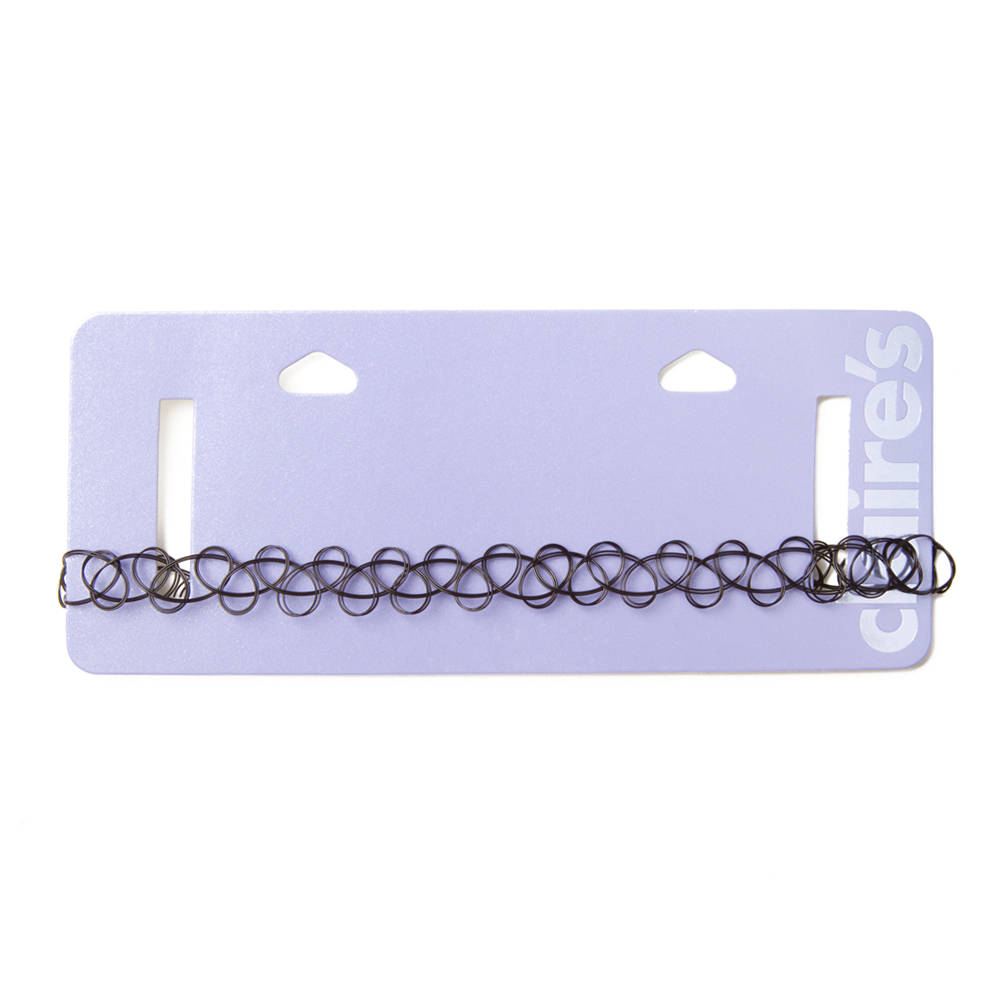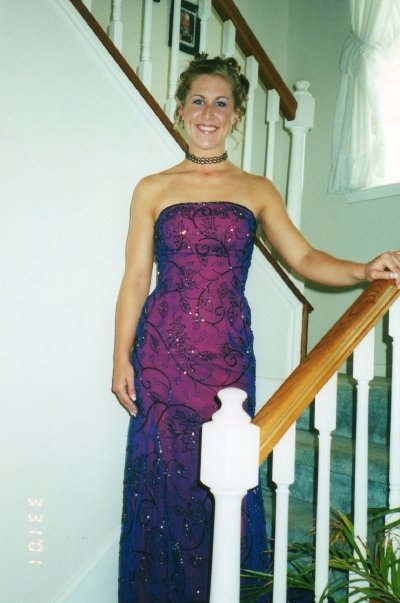|
Popular in the 90s and early 2000s, and resurfacing in today's fashion, tattoo chokers were found in most tween jewelry boxes. The original style was originally a thin woven mess of black strands of plastic mimicking a type of bicep tattoo. They then morphed into multi colors, beaded versions, and some that had charms and pendants. The origins of the choker in general date back before the 1600s. Anne Bolyn is often cited as an early example of a choker promoter as she wore her famous B pearl choker necklace. Chokers were also used as a political rebellion or marker as those during the French Revolution who had lost a loved one to the guillotine often wore a red ribbon tied tightly around their necks. Many articles and vlogs have been devoted to the history of chokers at large. If you would like to know more follow the links at the end of the article to some more info on these interesting necklaces. But, for this installment of Curious Fashion History I wanted to focus on specifically the "tattoo choker" as they are beginning to weasel their way back into western fashion.
References/Other Info:
2 Comments
How do you justify creating outside of work, but also justify being paid for what some see as a "hobby"As someone who works in a creative field, one would think I would want to come home and do some math equations or something; not want to create more. But, I find creating outside of work helps keep my mind excited and sharp.
This same feeling is true for many others working in the creative fields. Some try to take advantage of this feeling by asking creatives to do their work for much less than living wage or, heaven forbid, no pay at all. It is hard to explain the need/want to create combined with the necessity to be paid. Many people who have jobs in such fields as health, education, etc. get their creative fix through volunteering in creative areas. It is hard to explain that since the creative field is my job, I won't work for free. This is not to say I won't volunteer for a niece's school play, but if the position is more of a full fledged job than a few hours of pinning hair up, it should come with pay. But what of this need to create outside of work? How do I justify doing something creative without being paid? I tend to find creative outlets outside of my creative job field. As I am a costume designer I lean towards interior design, writing this blog, and drawing (I know costume designers draw too) to sooth my creative itch. I create interiors for myself and draw things I choose based on feelings, prompts I find, etc. My creative outlet also doesn't take up a workday's worth of time. I am not required to do it or be in a specific place for a strict amount of time. If I was, it would be a job and I should be getting paid a living wage to be there. While writing this blog I found if very hard to articulate my thoughts on the matter. This is something that wasn't discussed at school. As creatives we all have this drive to create, but when you pair it with our chosen jobs in what society calls the creative field, some easy to distinguish lines in other careers become muddled. I rarely (truly never) have an itch to perform surgery on someone, but a surgeon can have a creative spark in photography or sewing. Some see what I do as a hobby, because it is for others. It is very difficult to illustrate for those who did not go to school or costume design that I too have an expertise in something. This article was meant to be an exploration of how professionals in creative fields feel the need to continue creating outside of their work and fields, but has turned into a little bit of a fair pay stream of consciousness. I hope it sparks some creative juices in you one way or the other. |
Topics
All
Archives
July 2021
|


